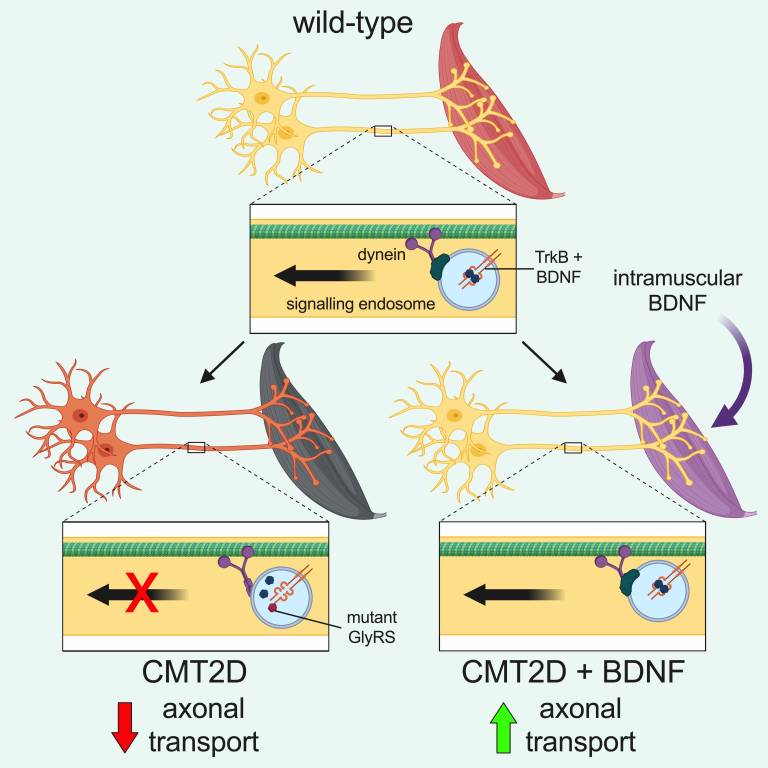Scientists develop a new treatment strategy to combat Charcot-Marie-Tooth disease
17 March 2023
Scientists at the UCL Queen Square Institute of Neurology have developed a new treatment strategy to combat an inherited neuromuscular condition known as Charcot-Marie-Tooth disease.

Charcot-Marie-Tooth disease (CMT) is an inherited nervous system disease that affects 1 in about every 2,500 people, making it one of the most common conditions to affect nerves and muscles. People with CMT have mobility issues and difficulties with sensation because two different types of nerve cell known as motor neurons and sensory neurons, malfunction and deteriorate. It is unknown why these nerve cells are affected in CMT, which has made it difficult to develop treatments for the disease.
Lead author, Dr James Sleigh, Department of Neuromuscular Diseases, UCL Queen Square Institute of Neurology, said: "This breakthrough provides a potential therapeutic approach for CMT, for which there is currently a complete lack of drug treatments. In the future, we plan to adapt and improve our strategy to enable the continual and long-term delivery of BDNF to all muscles, with the goal of reducing the impact of CMT on patients"
Links
- Sleigh, J. et al. Boosting peripheral BDNF rescues impaired in vivo axonal transport in CMT2D mice. JCI Insight. 2023. https://doi.org/10.1172/jci.insight.157191.
- Dr James Sleigh's academic profile
 Close
Close


